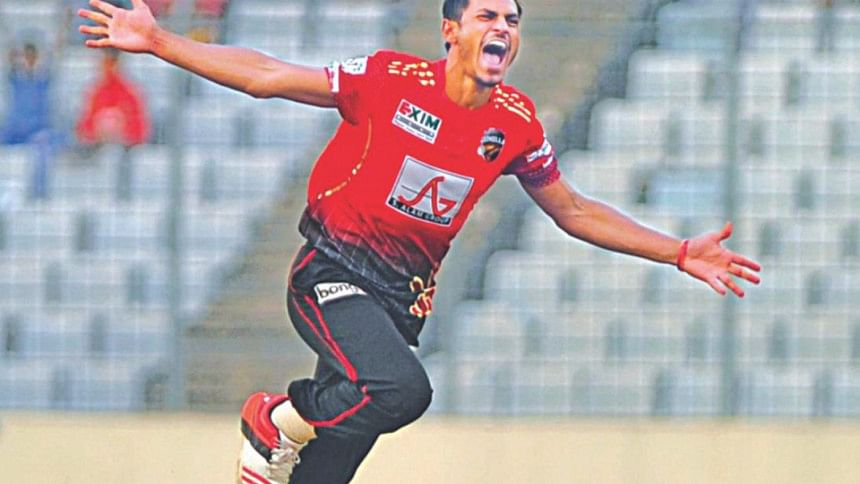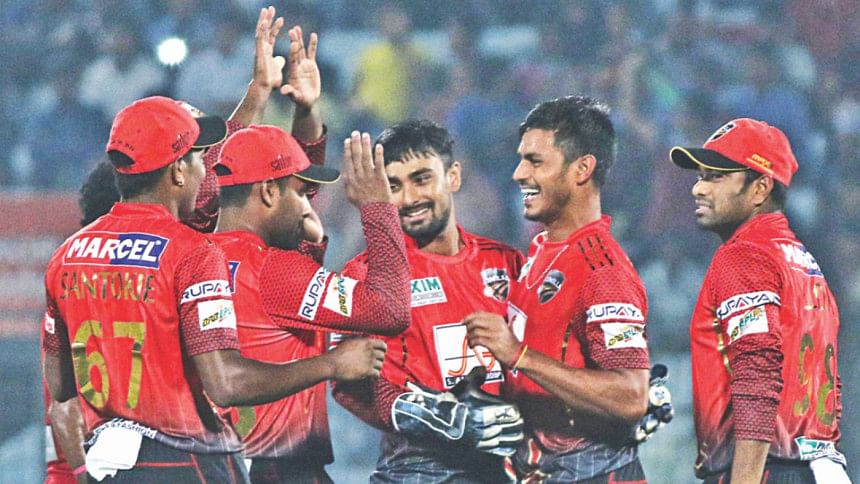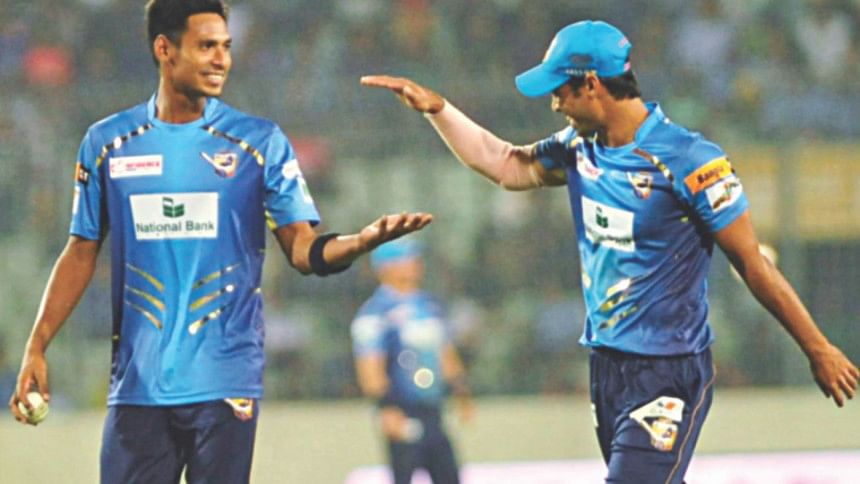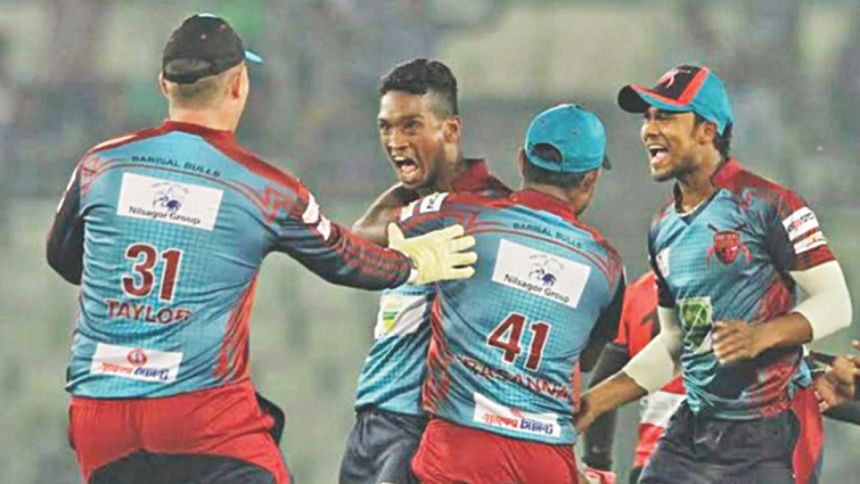BPL: Learning from mistakes

The scenes that preceded the third edition of the Bangladesh Premier League were quite similar to that of its previous editions.
There was plenty of excitement in the air. So much so that it, in a way, shrouded the Zimbabwe series, for the BPL had taken centre stage and that seemed to dominate discussions amongst players and fans alike.
At the same time though there was this eerie tension, which despite all the assurances given by the BPL's governing council, stuck its head out: Would the third BPL be able to get rid off its scars from the past?
It was a question that dominated talk shows, dressing rooms and even the late night addas at the tea stalls.
Truth be told, towards the start, it did seem as though that the third edition would eventually go on to follow the footsteps of the previous two tournaments, which were rocked by players payment issues and fixing allegations.
For starters, the competition attracted lesser number of owners than expected and the systems and the various processes followed by the BPL's governing council didn't seem fool proof.

Questions were also raised since an employee of a company that bought a team was named the member-secretary of the BPL's governing council.
When all these hurdles were passed the problems appeared once the tournament started.
On the first day there was a stampede of sorts at the stadium as hundreds of fans who had come along with the Dhaka Dynamites rushed past the main gate of the Sher-e-Bangla National Stadium. The security personnel had to be on their feet that day.
And then there was controversy when the BPL's governing council bent the rules to allow the Sylhet Superstars to play with two foreign players instead of the required four. However, once the competition surpassed these early gaffes, there was plenty to look forward to.
The biggest plus-point of this season was that there hasn't been any complaints from players regarding their payments. Almost all the franchises cleared their due amounts and unlike the last two seasons the members of the governing council didn't exactly have to chase the franchises.
It was a rather unique T20 competition with slow-and-low wickets. The batsmen found it extremely difficult and many termed the wickets as unpredictable. It therefore wasn't a surprise to witness a series of five-wicket hauls in the competition.

As far as Bangladesh's cricketers are concerned the BPL did seem to do them plenty of good. There was a lot more enthusiasm on the ground when compared to any other domestic tournament and almost every player, young or old, had something to play for.
The find of the tournament was none other than Abu Hider. The energetic left-arm pacer finished as the second highest wicket-taker of the competition;
more importantly though he managed to excel under tough conditions. More often than not he was given the ball during crunch scenarios and he rarely failed.
What was impressive about the 19-year-old was that he didn't seem to have any jitters at such a big stage. On the contrary, he was as aggressive as ever.
The full-length delivery that literally toppled Lendl Simmons was his highlight of tournament. Mashrafe Bin Mortaza has already spoken highly of the bowler, and it won't be a surprise if one sees him in the national colours very soon.
The other positive aspect of the competition was the performance of the players outside the national team. It was, in a sense, a tournament that brought them back to the scene.

Players like Jahurul Islam and Alok Kapali were the unlikely heroes for their respective teams.
An opener who has been struggling for the last one and half years primarily due to family issues, Jahurul did notch it up in the competition. There were a number of highly-rated players in the Rangpur Riders, but none of them were as consistent with the bat as Jahurul was.
For Kapali, it was a fairy-tale finish. Ignored after scoring two double centuries in first-class cricket earlier this year, it was a boost that the former national player required. The way he finished the final under tensed circumstances, suggests that the middle-order batsman still has it in him.
The other player who impressed was Imrul Kayes. Imrul finished as the second highest run-getter of the competition, behind Kumar Sangakkara and scored 300-plus runs.
For Imrul, it was a case of proving to the selectors that he wasn't just meant for Test cricket. In an interview following the tournament, the left-hander did admit that he was 'hurt' to be tagged as a specialist for the longer format of the game.
Furthermore he said that he had proved his ability to play in the shorter format of the game in the past. “I was Bangladesh's highest run-getter in 2010,” he had remarked.
Imrul may not be immediately drafted into the T20 side, with the likes of Soumya Sarkar and Liton Das around; however, his performance in the BPL will give selectors something to think about.
While there were several other positives, for instance, Al-Amin Hossain seemed to be on fire and so was Mustafizur Rahman, however, the national selectors will be a little worried with the form of some of their most-sought after players.
Soumya and Liton failed to impress throughout the tournament. They were early buys in their respective franchises and they just couldn't seem to take the pressure.
Shakib Al Hasan's performance would have also spread a bit of concern. The player of the tournament of the last edition, Shakib's batting looked fragile and the team management will hope everything gets in order ahead of the ICC World Twenty20.
On the whole, it was a kind of competition that Bangladesh required: clean, competitive and a treat for the fans. People are already looking forward to the fourth edition and that's a feeling that one didn't get after the last two seasons.
The BCB might have had two disastrous seasons, but during the third edition it seemed as though that they had finally learned from their mistakes.
The writer is a reporter for the sports section of The Daily Star.

 For all latest news, follow The Daily Star's Google News channel.
For all latest news, follow The Daily Star's Google News channel. 



Comments